Disclosure: This article contains affiliate links. We may earn a commission from purchases at no extra cost to you, which helps our travel content.
There exists a Rome that many travelers never witness—a city that emerges as the sun descends behind the ancient hills, bathing millennia of history in the amber glow of streetlamps and moonlight. Having visited the Eternal City countless times across four decades, I've come to believe that Rome truly reveals her soul after dark. The daytime crush of tourists dissipates, temperatures soften, and a certain magic infuses the cobblestone streets. This past summer, I dedicated an entire week to experiencing Rome exclusively from dusk till midnight—a pilgrimage of sorts to understand how darkness transforms these sacred spaces. What I discovered was not merely a quieter version of daytime attractions, but rather an entirely different city—one where history breathes more deeply, where art takes on new dimensions under thoughtful illumination, and where the boundaries between past and present seem to dissolve in the night air.
Twilight at the Vatican Museums: A Transcendent Experience
The Vatican Museums by day can be an exercise in endurance rather than enlightenment—a sea of selfie sticks and tour groups moving at a glacial pace through corridors of incomparable beauty. But on Friday evenings from April through October, the museums offer a dramatically different experience that transforms how one connects with these masterpieces.
I arrived at 7:00 PM on a balmy June evening, the golden hour light streaming through the windows as I ascended the spiral staircase. With visitor numbers limited to roughly a third of daytime capacity, the museums take on the atmosphere of a private viewing. Standing alone in the Gallery of Maps for nearly fifteen minutes, I traced the intricate cartographic details with my eyes, noting elements I'd missed on three previous daytime visits.
The Sistine Chapel—that sublime culmination of Renaissance genius—becomes something entirely different in the evening hours. Rather than being hurried through by guards, visitors can linger. I found a seat along the perimeter wall and sat for nearly forty minutes, my neck craned upward, sketchbook open on my lap. The chapel held perhaps thirty people rather than the usual hundreds. In this sacred quiet, Michelangelo's vision of creation and judgment resonated as the theological meditation it was intended to be, rather than an item to check off a tourist itinerary.
As I departed around 10:30 PM, St. Peter's Square lay bathed in dramatic lighting, the colonnades casting long shadows across the travertine pavement—a theatrical stage set worthy of Bernini's baroque sensibilities.
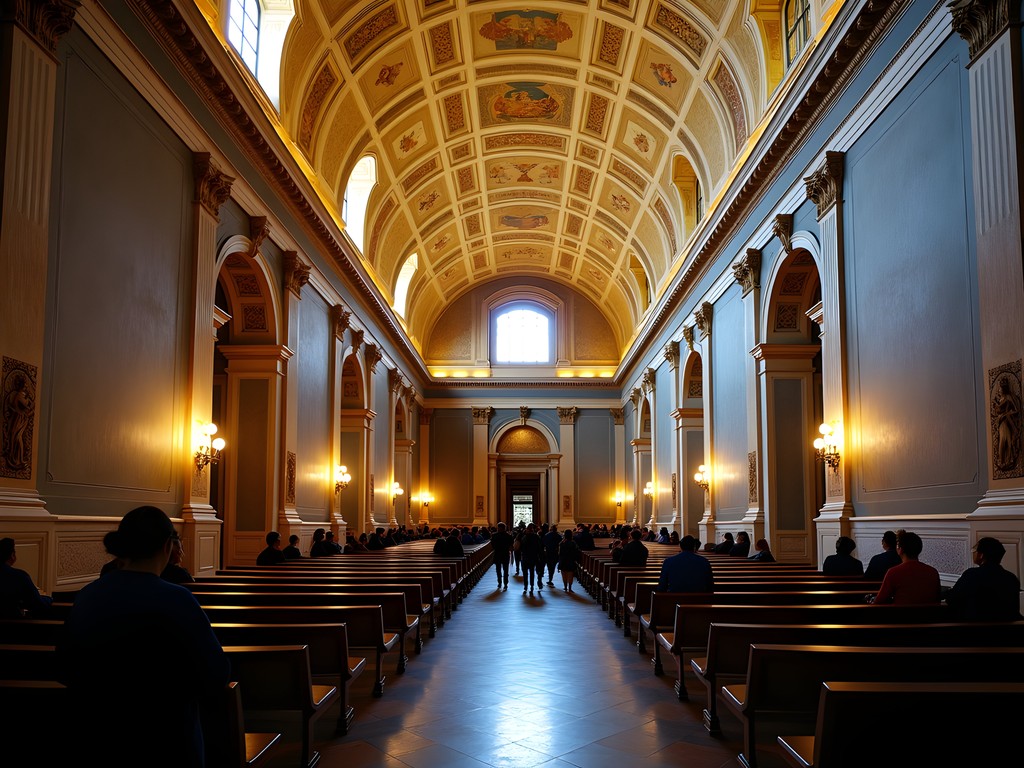
💡 Pro Tips
- Book Vatican Friday night tickets at least one month in advance
- Bring a quality pair of binoculars for detailed ceiling viewing
- Consider hiring a specialized art historian guide for deeper insights into the collections
Moonlit Monuments: The Forum and Colosseum After Hours
There is something profoundly moving about standing in the Roman Forum as darkness falls—a liminal experience where the veil between present and past seems to thin. On my third evening in Rome, I joined a specialized nighttime archaeological tour that granted access to areas typically closed after standard hours.
Our small group of twelve met at the Arch of Constantine as the last rays of sunlight gilded its marble reliefs. Our guide, Dottoressa Francesca, was not merely knowledgeable but possessed that rare gift of making ancient stones speak. As we moved through the Forum with our handheld lanterns, the monuments emerged from darkness in dramatic chiaroscuro, revealing details that daylight tends to flatten.
The experience of entering the Colosseum by moonlight defies adequate description. The amphitheater, freed from its daytime crowds, reclaims its imposing presence. Standing on the partially reconstructed arena floor, looking up at the seating tiers silvered by moonlight, one can almost hear the echoes of the 50,000 spectators who once filled this space. Francesca dimmed our lanterns for a moment of silent contemplation, and in that darkness, I felt the weight of history more tangibly than ever before.
What struck me most was how the night transformed these monuments from tourist attractions back into sacred spaces. The cool evening air carried the scent of jasmine from nearby gardens, mingling with the ancient stone. Time seemed to fold upon itself—a reminder that we are merely the latest in a long procession of humans to stand in awe before these testaments to Roman ambition and artistry.

💡 Pro Tips
- Wear comfortable shoes with good traction as ancient pathways can be uneven
- Bring a light layer even in summer as evening temperatures can drop significantly
- Consider investing in a specialized night photography smartphone lens for better memories
Culinary Pilgrimages: Evening Food Rituals in Trastevere
Rome's relationship with food transcends mere sustenance—it is a cultural touchstone, a daily ritual that binds communities. Nowhere is this more evident than in Trastevere after dark, where dining transforms into a form of participatory theater.
My quest to understand Roman evening food culture led me to a family-run trattoria down a narrow vicolo, where tables spilled onto the cobblestones and neighborhood residents greeted each other with warm embraces. I was welcomed not as a tourist but as a temporary addition to this nightly communion.
The proprietor, Signora Lucia, upon learning of my interest in traditional Roman cuisine, abandoned the printed menu entirely. "Stasera mangi come una romana vera," she declared—tonight you eat like a true Roman. What followed was a four-hour progression of dishes that told the story of Rome's culinary heritage better than any guidebook ever could.
The cacio e pepe arrived with a theatrical tableside preparation, the waiter tossing fresh pasta in a hollowed wheel of aged pecorino romano, the sharp tang of black pepper hanging in the air. When I inquired about the exceptional quality of the pasta, Signora Lucia revealed it had been made that morning on her mother's wooden table, using the pasta machine that had been in their family for three generations.
As midnight approached, neighbors from adjacent tables joined in conversation, glasses of local wine were shared, and an impromptu lesson in Roman dialect ensued. This, I realized, is the Rome that exists beyond the monuments—a living, breathing cultural heritage that reveals itself only to those who linger past sunset.
The following evening, I participated in a twilight food walking tour through the Jewish Ghetto and Campo de' Fiori, where our guide Marco illuminated the historical influences on Roman cuisine—from ancient preservation techniques to the Jewish-Roman traditions that gave birth to iconic dishes like carciofi alla giudia (Jewish-style artichokes). The experience transcended mere gastronomy, becoming instead a lesson in how food preserves cultural memory across centuries.
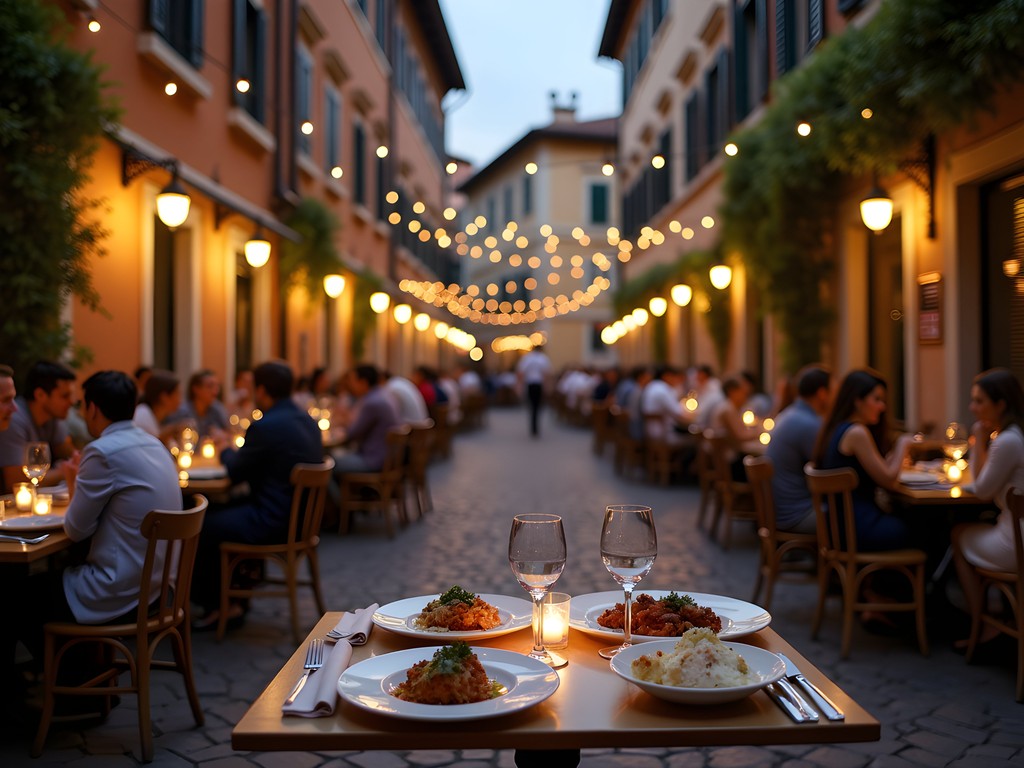
💡 Pro Tips
- Ask for 'tavoli fuori' (outside tables) when making reservations to enjoy the evening atmosphere
- Dinner in Rome rarely begins before 8:00 PM, with locals often arriving after 9:00
- Learn a few phrases in Italian—even basic food vocabulary will enhance your dining experience
Sacred Sounds: Evening Concerts in Ancient Churches
Rome's churches house not only visual masterpieces but also possess remarkable acoustic properties that have shaped Western sacred music for centuries. On my fourth evening, I attended a performance of Vivaldi's "Four Seasons" at San Antonio dei Portoghesi, a 17th-century baroque jewel tucked away on a quiet street near Piazza Navona.
Arriving early allowed me time to study the church's artwork in the fading daylight—paintings by Cavalier d'Arpino and Antoniazzo Romano that most guidebooks mention only in passing. As twilight deepened, the church's interior was gradually illuminated by candles, creating a flickering environment remarkably similar to what the original architects would have designed for.
The musicians, dressed in period-appropriate attire, performed on authentic baroque instruments, creating a sound that felt simultaneously ancient and immediate. The experience transcended mere entertainment, becoming instead a form of time travel—a connection to how this music would have been heard centuries ago, in precisely this type of sacred space.
For those seeking to record such memorable performances, I've found my portable audio recorder invaluable for capturing these acoustic experiences without disturbing others. With permission, of course—I always inquire before recording in sacred spaces.
Later in the week, I discovered the Church of Sant'Agnese in Agone offers evening access to their choir loft during certain vespers services. From this elevated position, one experiences both Borromini's architectural genius and the sublime polyphony of the choir in a perspective typically reserved for clergy.
What makes these evening musical experiences so profound is the integration of multiple art forms—architecture, visual art, and music—creating a synesthetic experience that engages all the senses. In our modern world of compartmentalized arts, these baroque spaces remind us that true cultural immersion involves the whole person, body and spirit alike.
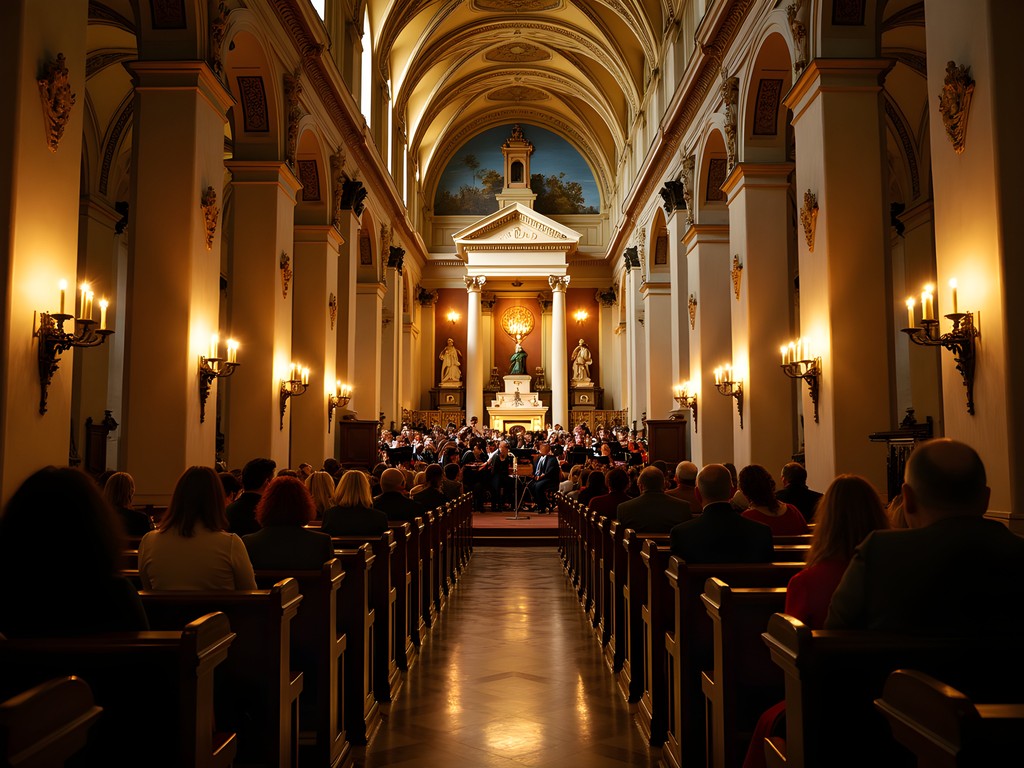
💡 Pro Tips
- Research concert schedules before your trip as many are seasonal or tied to religious calendars
- Arrive 30-45 minutes early to appreciate the church architecture before concerts begin
- Consider bringing a shawl or light covering as many sacred spaces require shoulders to be covered, even in evening
Whispers of Antiquity: Private Evening Access to Hidden Rome
Some of Rome's most profound experiences lie behind doors typically closed to the general public. Through connections developed over decades of art historical research, I arranged several private evening viewings that revealed aspects of Rome few travelers encounter.
The Palazzo Colonna, still home to one of Rome's oldest noble families, opens its state apartments to the public only on Saturday mornings. However, through advance arrangements, small groups can occasionally secure evening access. Walking through the galleria principal at sunset, watching as the last rays of daylight streamed through tall windows onto Carracci frescoes, created an experience of aristocratic Rome impossible during standard visiting hours.
My most treasured evening experience came through a specialized tour of the Basilica di San Clemente, where we descended through three distinct layers of Roman history. The current 12th-century church sits atop a 4th-century basilica, which itself was built over a 1st-century Mithraic temple and Roman apartments.
By special arrangement, our small group of six visited after closing hours with an archaeologist who has worked on the site for over a decade. Descending into the lowest level by lantern light, we stood in near-darkness beside an still-functioning ancient Roman spring, its gentle burbling the same sound that residents would have heard two millennia ago. In that moment, time collapsed—a direct, unmediated connection to daily Roman life that no museum can replicate.
For documenting such experiences in challenging lighting conditions, my low-light camera has proven invaluable, capturing details invisible to the naked eye without disturbing the atmospheric lighting that makes these experiences so magical.
What struck me most profoundly was how these private evening experiences transformed my understanding of Rome's layered history. Rather than the neat chronological narrative presented in guidebooks, these nocturnal explorations revealed how Rome is actually a palimpsest—each era building upon, incorporating, and transforming what came before in an unbroken continuum of human creativity and adaptation.
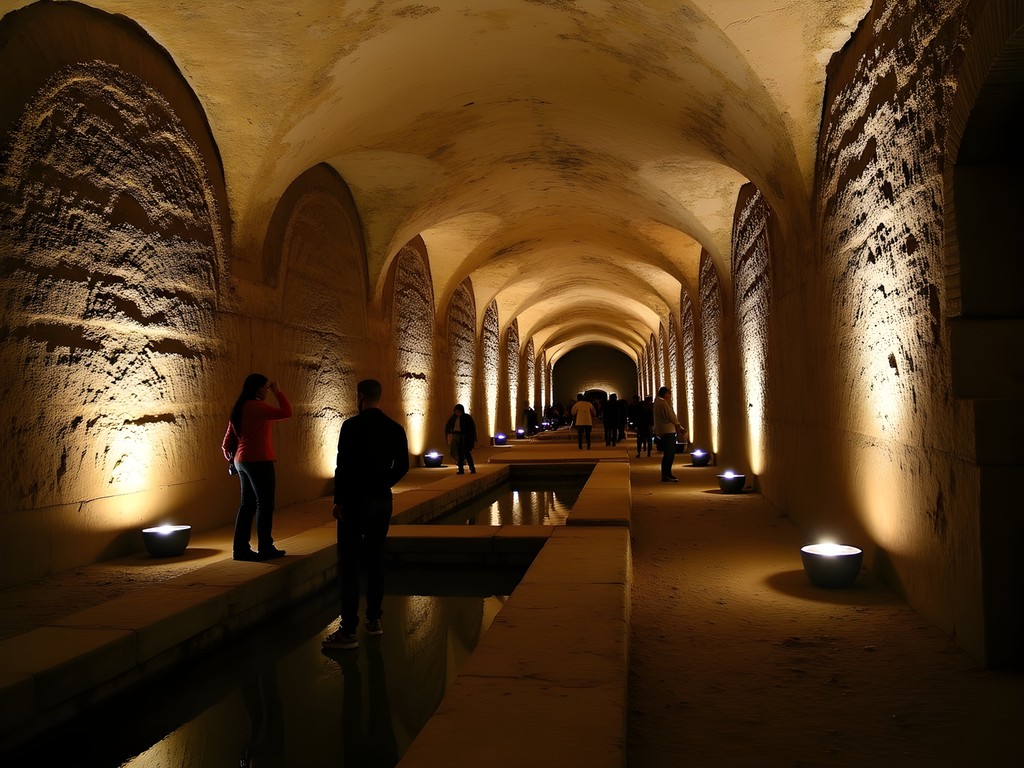
💡 Pro Tips
- Research specialized tour operators who have established relationships with site managers for private access
- Book these exclusive experiences at least 3-4 months in advance as spaces are extremely limited
- Consider pooling resources with other travelers to share the cost of private access, which can be substantial but worthwhile
Final Thoughts
As I departed Rome after my week of nocturnal explorations, I carried with me not just memories but a profound shift in perspective. The Eternal City after dark reveals dimensions impossible to access in the harsh light and crowds of day—a Rome of whispers rather than shouts, of contemplation rather than consumption. For couples seeking meaningful connection both with each other and with the soul of this ancient place, evening experiences offer something approaching the sacred. Perhaps this is the true gift of Rome by night: the space to absorb history at a human pace, to feel rather than merely see, to participate rather than merely observe. As Goethe once wrote after his Italian journey, 'Only in Rome is it possible to understand Rome.' I would humbly amend: Only in Rome after dark is it possible to truly feel Rome's eternal heart beating across the centuries, inviting us into conversation with those who walked these same stones before us.
✨ Key Takeaways
- Evening access dramatically transforms the experience of major sites by reducing crowds and creating atmospheric conditions
- Specialized night tours often reveal aspects of monuments and artwork invisible during daylight hours
- Rome's evening food culture offers authentic cultural immersion beyond typical tourist experiences
- Private after-hours access to normally restricted sites creates profound connections to history impossible during standard visiting hours
📋 Practical Information
Best Time to Visit
Late May through early July, and September
Budget Estimate
€200-400 per day for luxury experiences
Recommended Duration
Minimum 5 nights to experience Rome's evening offerings properly
Difficulty Level
Easy To Moderate, With Some Walking On Uneven Surfaces
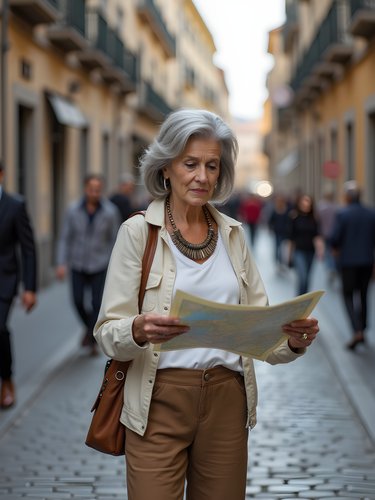
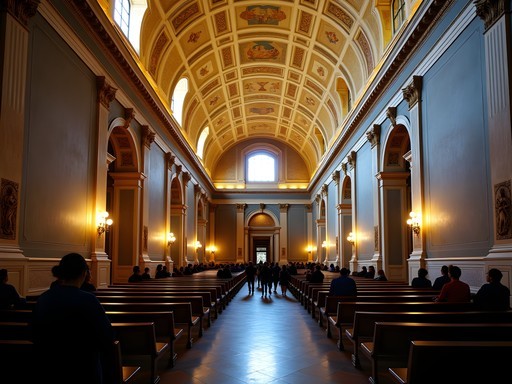
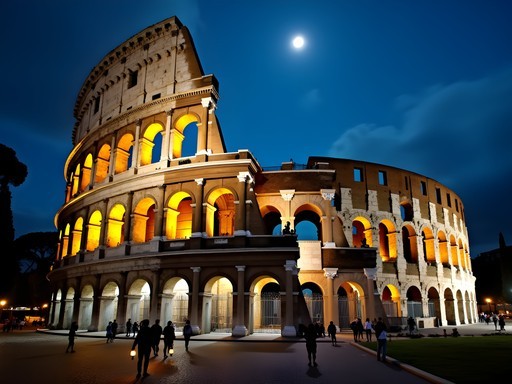

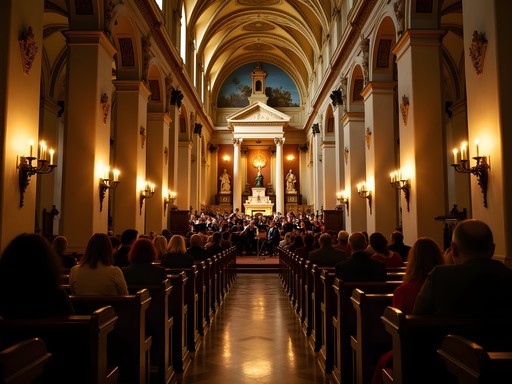
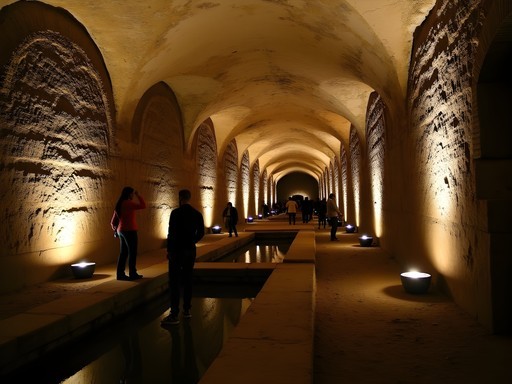


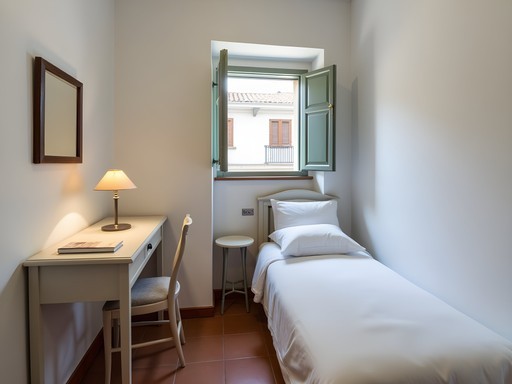
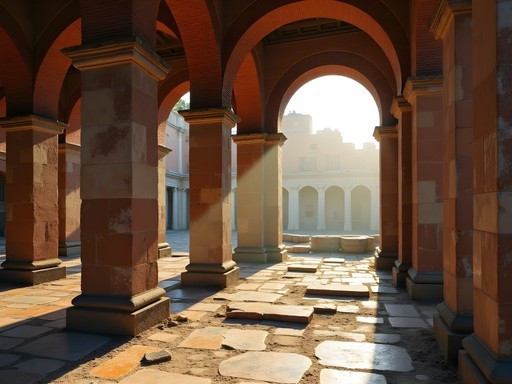

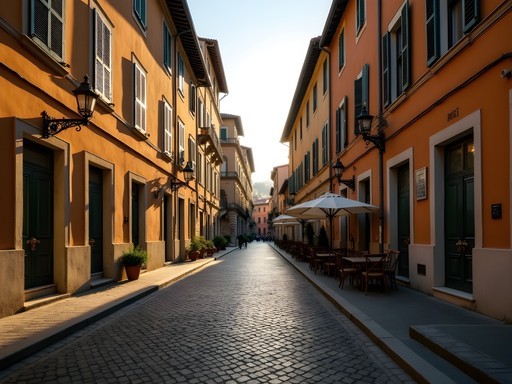


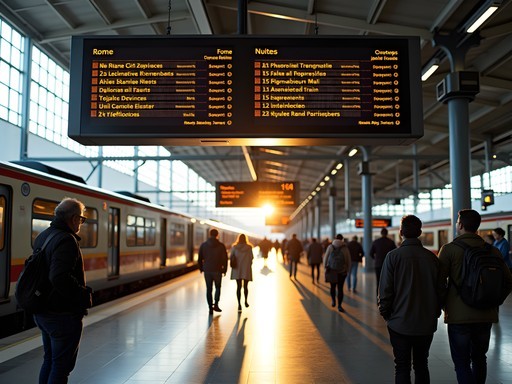
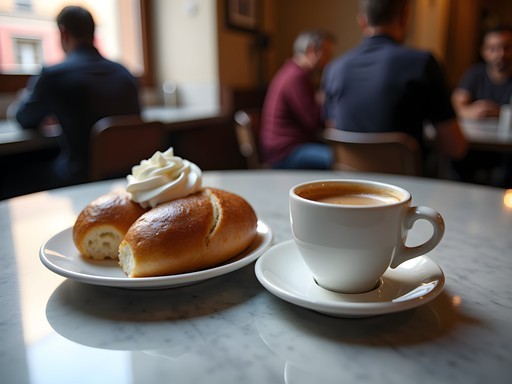
Comments
RomeObsessed
Those evening shots of the Forum are absolutely stunning! 😍
summertime
Beautiful post! How safe is Rome at night for solo female travelers? I'm considering doing some of these evening experiences by myself in May.
Sophia Cole
Thank you! I felt quite safe as a solo female traveler in central Rome, even at night. The tourist areas are well-lit and populated until late. Just use normal city precautions - stay aware, stick to main streets when possible, and I'd recommend taking taxis for longer distances after 11pm rather than public transport. The evening tours are particularly good for solo travelers as you're with a group!
summertime
That's really helpful, thanks! Definitely going to book that Vatican night tour now.
escapehero
Just got back from Rome last week and did the evening Colosseum tour you mentioned! Totally different vibe compared to daytime. The underground chambers were actually kinda spooky at night but in the best way. We also tried that little family restaurant in Trastevere (can't remember the name but it had blue doors?) and the carbonara was INSANE. One tip: we used pocket guidebook for the nighttime walks which was super handy since it's small enough to fit in a jacket pocket. Wish we'd known about those church concerts though!
Sophia Cole
That restaurant with the blue doors sounds like Trattoria Da Enzo! So glad you experienced the Colosseum at night - it really is magical, isn't it? The church concerts are a good excuse for a return visit someday!
escapehero
YES! Trattoria Da Enzo! That's the one! Already planning to go back next year 😊
Dylan Turner
Sophia, your piece on Rome after dark resonates deeply with my own experiences there last autumn. The Vatican Museums after hours was transformative - the Sistine Chapel with only a handful of others present creates an entirely different relationship with the art. One suggestion I'd add is the rooftop aperitivo at Hotel Raphael near Piazza Navona. The panoramic views of Rome's domes and spires at sunset, accompanied by an expertly crafted Negroni, provides a contemplative prelude to an evening of exploration. I found that strategically planning these evening experiences with morning rest periods created the perfect rhythm for appreciating the city's nocturnal character without exhaustion.
summertime
Dylan, how difficult was it to get tickets for the Vatican after hours? Planning a trip in April and wondering if I need to book months in advance.
Dylan Turner
@summertime For April, I'd recommend booking at least 2-3 months ahead. The Friday night tours sell out fastest. The official Vatican site opens reservations about 90 days out, but tour operators sometimes secure blocks earlier. Well worth the planning effort!
ItalyLover44
Just booked those Vatican night tickets! Can't wait for October!
Savannah Torres
For families visiting Rome, I'd add that the evening passeggiata tradition is perfect for kids too! After our Vatican night tour, we joined locals in the evening stroll through Piazza Navona and stopped for gelato. My kids still talk about watching the street performers under the fountains at twilight. One practical tip: Rome's evening bus routes can be confusing and less frequent at night. We found having a good transit app was essential, and sometimes just splurging on a taxi back to the hotel after a late night was worth every penny, especially with tired kids. The memories of seeing the monuments all lit up as we drove past made even the taxi ride magical!
greenace
OMG the evening concerts in churches are INCREDIBLE!!! We stumbled into one at Sant'Agnese in Agone last month - Vivaldi's Four Seasons with the dome lit up above us. Literal goosebumps! And it was only €25! Definitely check the posters around Navona and Campo de' Fiori for concert schedules. BEST memory of our trip!
wanderking
Has anyone done these night tours with kids? Wondering if it would be too late for my 8 and 10 year olds or if it's worth keeping them up.
Savannah Torres
We took our kids (9 and 11) on the Vatican evening tour and they loved it! The museums feel almost magical at night, and there's something about seeing the art with fewer people that kept them engaged. We did push dinner earlier that day and let them have a good afternoon rest at the hotel. Also brought snacks! The tour ended around 10pm but the experience was worth the later bedtime. Just plan for a slower morning the next day!
Savannah Walker
Sophia, this post brought back so many memories! Last October, I took my parents to Rome for their 35th anniversary and booked the after-hours Colosseum tour you mentioned. My dad, who's a history buff but typically hates crowds, was absolutely mesmerized seeing the underground chambers illuminated at night. The guide explained how the pulley systems worked to bring gladiators and animals up to the arena floor, and without hundreds of other tourists around, you could almost hear the echoes of the past. One tip for anyone planning evening visits: the lighting for photography is tricky but magical. I found setting my camera to night portrait mode and using a mini tripod for longer exposures captured the amber glow you described perfectly. The Forum especially looks like something from a dream when lit up against the night sky.
Sophia Cole
Thank you for those photography tips, Savannah! You're absolutely right about the lighting challenges. That Colosseum underground tour is incredible, isn't it? There's something about standing in those chambers at night that daylight just doesn't capture.
Sophia Gomez
Beautifully written post! Your section on evening food rituals in Trastevere brought back so many memories. Last summer, I stumbled upon this tiny wine bar called Enoteca Ferrara where the owner had us try suppli that his grandmother made that morning. The contrast between the ancient buildings and the vibrant evening energy is something I still think about. One thing I'd add - the summer night walks (passeggiata) along the Tiber River when they set up those temporary restaurants and shops is another magical Roman evening experience. Did you get a chance to check those out?
Sophia Cole
Thanks Sophia! Yes, I caught the tail end of Lungo il Tevere (the summer Tiber festival) and it was wonderful - definitely should have included that! Enoteca Ferrara is going on my list for next time. Isn't it amazing how Rome transforms after sunset?
Venture X
Premium card with 2X miles, $300 travel credit, Priority Pass